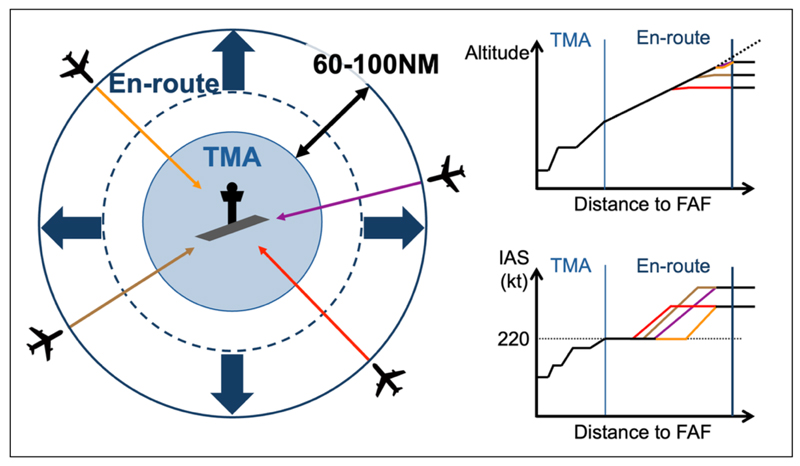2025-05-21 東京大学

<関連情報>
- https://www.rcast.u-tokyo.ac.jp/ja/news/release/20250521.html
- https://www.sciencedirect.com/science/article/pii/S0969699725000626
ターミナル空域でより燃費の良い到着を実現する航空管制法 Air traffic control method for more fuel efficient arrivals in terminal airspace
Daiki Iwata, Yuki Nonaka, Eri Itoh
Journal of Air Transport Management Available online: 20 May 2025
DOI:https://doi.org/10.1016/j.jairtraman.2025.102799
Abstract
Growing air traffic demand in recent years means that the aviation industry is faced with challenges in rising CO2 emissions, associated fuel costs, congestion, noise and operational complexity. Approach and sequencing in terminal airspace is one such phase of flight, at which congestion has high cost in fuel and management of operational complexity. A novel solution for mitigating these negative impacts in a simple and cost-effective manner are welcome. The present study evaluated the efficacy of air traffic control operations combining fixed-flight path angle descent and speed control techniques, on fuel efficiency and pilot operability. We designed a series of flight scenarios for Kansai International Airport arrivals and ran them in a simulation environment. The fixed-flight path angle descent facilitates more precise and reliable prediction of arrival trajectory and reduction in air traffic control operation complexity. The fixed-flight path angle descent procedure has additional anticipated benefits, namely, reduction in fuel burn and the ability to control aircraft speed without compromising fuel efficiency. It may therefore be a viable contender for arrival sequencing and separation maintenance tactic, in place of today’s common vectoring technique. Furthermore, the fixed-flight path angle descent can be performed without modifications or additions to the current onboard electronic equipment of aircraft. This paper demonstrates that combination of fixed-flight path angle descent and speed control performed in a commercial aircraft has the same utility in the route extension by vectoring performed by air traffic controllers during congested air traffic and can be performed while achieving reduction in fuel consumption. Flight simulator tests of an aircraft approaching Kansai International Airport from a southwestern or western direction show that combination of fixed-flight path angle descent and speed control can reduce fuel consumption by up to approximately 260 pounds per flight, without causing noticeable problem in the aircraft operation. Furthermore, the relationship between the en-route sector, upstream of the terminal airspace, and the angle selected for the fixed-flight path angle descent, the operational issues for performing the proposed speed control method are discussed.



